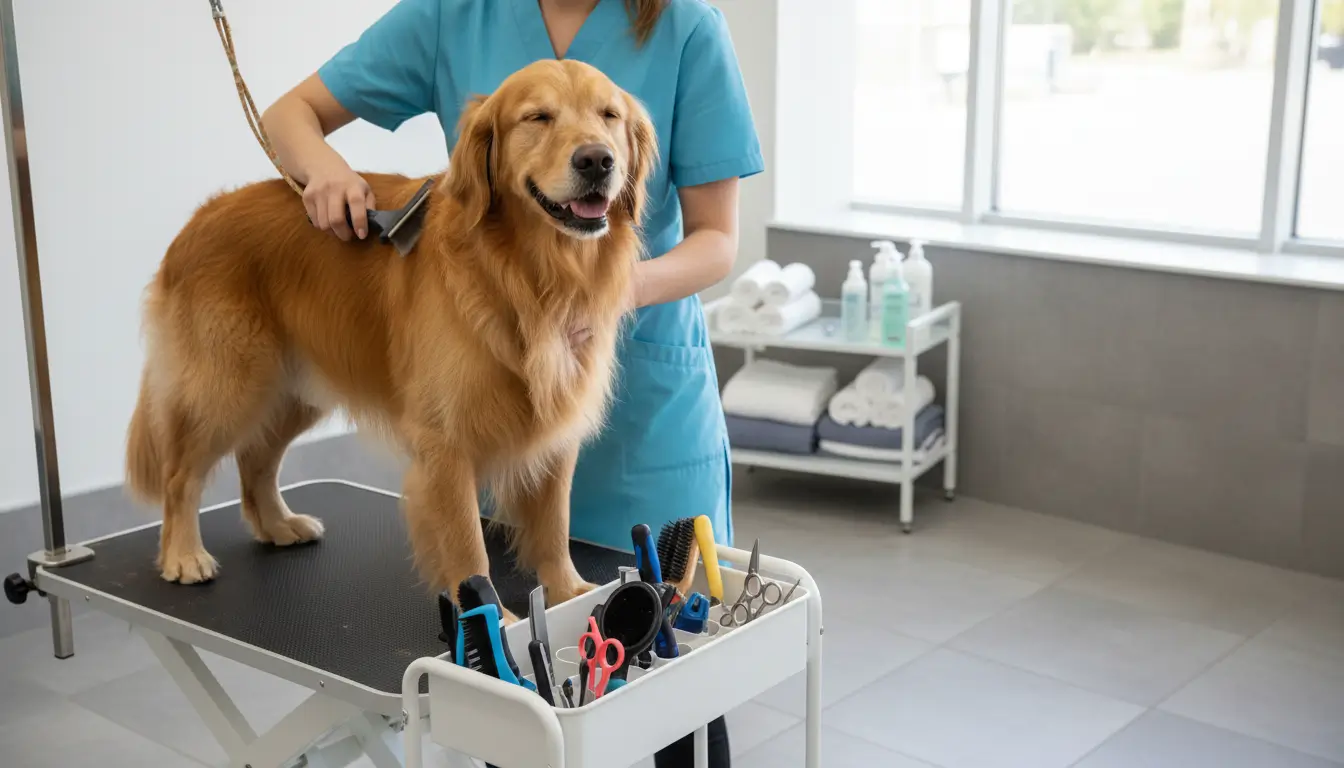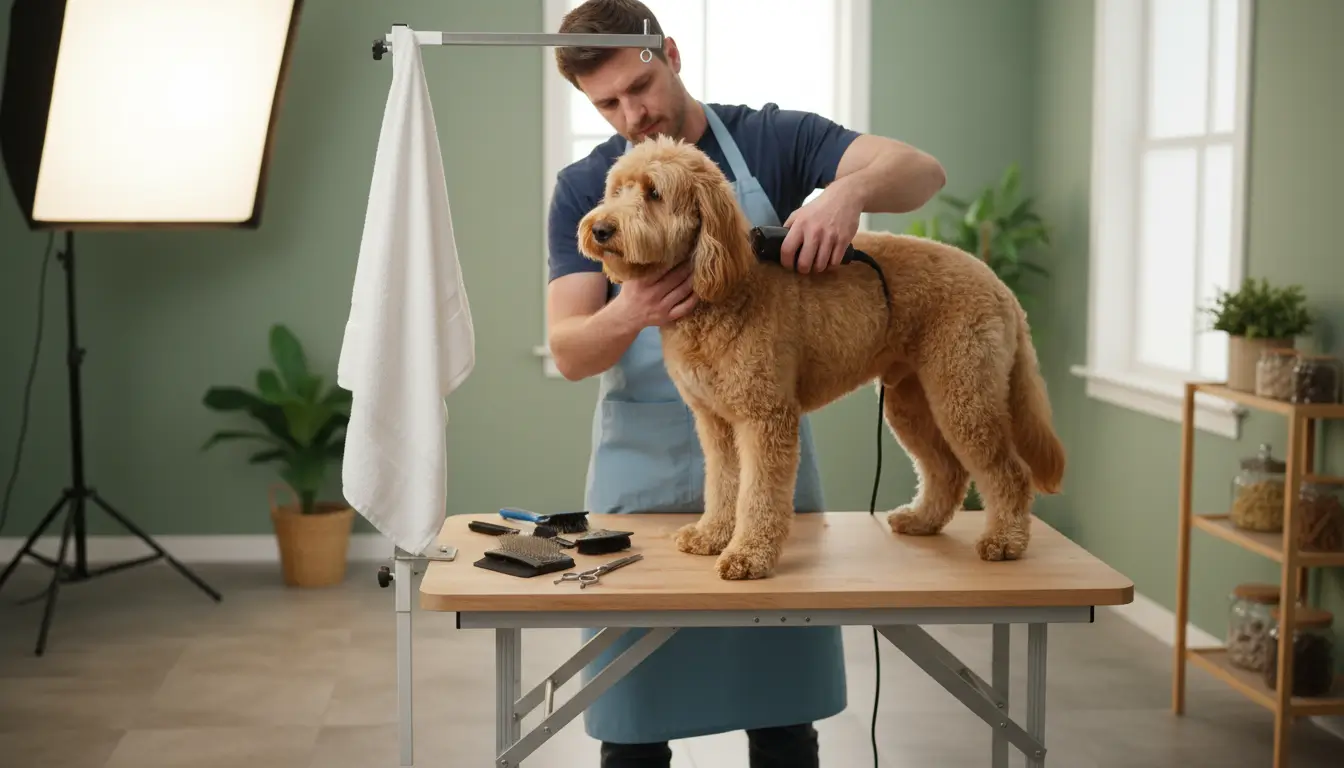Essential Grooming Tips for Dogs: The Complete Irish Guide

Why Regular Grooming Matters for Your Dog
Regular grooming is about much more than keeping your dog looking their best—it’s essential for their health and wellbeing. From preventing painful matting to catching skin issues early, a consistent grooming routine helps your dog stay comfortable, happy, and healthy throughout their life.
In Ireland’s changing weather conditions, proper grooming becomes even more important. Coastal salt air, muddy countryside walks, and seasonal shedding all demand attention and care.
Create the Perfect Grooming Environment
Before starting any grooming session, set up a calm, comfortable space. Choose a non-slip surface, gather all your tools beforehand, and ensure good lighting. Many dogs feel anxious during grooming, so keep treats nearby and speak in soothing tones.

Invest in quality tools—rounded-tip scissors, slicker brushes for different coat types, nail clippers, and gentle shampoo designed specifically for dogs. Human products can irritate their skin and disrupt natural pH balances.
Brushing: The Foundation of All Grooming
Different coat types require different approaches:
Short-Coated Breeds
Dalmatians, Boxers, and Beagles need weekly brushing with a bristle brush or grooming mitt. This removes loose hair and distributes natural oils for a healthy shine.
Double-Coated Breeds
Border Collies and German Shepherds need more frequent attention. During shedding season (typically spring and autumn), daily brushing prevents mats and reduces fur tumbleweeds around your home.
Long-Coated Breeds
Setters, Spaniels, and Collies require daily brushing to prevent painful tangles. Work in sections, starting at the skin and moving outward. Always brush before bathing—water tightens mats.
Check your dog’s skin during brushing sessions. Look for redness, bumps, parasites, or unusual spots. Early detection makes treatment much easier.
Bathing Your Dog Correctly
Most dogs only need bathing every 4-8 weeks unless they get particularly dirty. Over-bathing strips natural oils and causes dry, irritated skin.
Always brush thoroughly before bathing. Wet your dog’s coat completely with lukewarm water, apply dog-specific shampoo, and massage gently. Avoid getting water in ears and shampoo in eyes. Rinse thoroughly—residual shampoo causes irritation.
For nervous dogs, start with just paws and gradually work up to full baths. Keep treats plentiful and sessions short initially.
Nail Care: Often Overlooked, Vitally Important
Long nails cause discomfort, affect walking posture, and can lead to joint problems. If you hear clicking on hard floors, it’s time for a trim.
Trim small amounts at a time to avoid the quick—the blood vessel inside the nail. For white nails, the pink quick is visible. For dark nails, trim tiny bits until you see a black dot in the center.
Keep styptic powder handy to stop bleeding if you accidentally cut too short. If your dog won’t tolerate nail clipping, consider nail grinding or professional help.
Ear Cleaning and Dental Care
Check ears weekly for dirt, wax, or signs of infection. Use veterinarian-approved ear cleaner on cotton balls—never cotton buds, which can damage the ear canal. Dogs with long, floppy ears need extra attention as moisture traps easily.

Dental health impacts overall wellbeing. Brush your dog’s teeth 2-3 times weekly with dog-safe toothpaste. Start slowly, letting them taste the paste first, then gradually introduce the brush. Dental chews and appropriate chew toys help between brushings.
Professional Grooming vs. At-Home Care
While regular maintenance at home is essential, professional groomers offer expertise for specific needs. They can handle complicated haircuts, thorough de-shedding treatments, and nail grinding. Consider professional grooming every 6-8 weeks for long-coated breeds or dogs who dislike home grooming.
Professional groomers also spot health issues like skin conditions, ear infections, or dental problems that you might miss.
Seasonal Grooming Considerations in Ireland
Irish weather demands seasonal adjustments. In wetter months, dry your dog thoroughly after walks to prevent skin issues. Check paws for mud balls between pads, which cause discomfort and potential infections.
During warmer months, lighter trimming helps keep outdoor dogs comfortable. However, never shave double-coated breeds completely—their coat insulates against heat and protects from sunburn.
Summer brings parasite risks. Check thoroughly after walks through grass and woodlands for ticks and fleas.
When to Consult Your Vet
Some grooming issues indicate health problems. Contact your vet if you notice:
- Excessive scratching or biting at skin
- Red, inflamed, or scabby skin
- Significant hair loss or bald patches
- Foul odors, especially from ears or skin
- Lumps, bumps, or growths
- Changes in coat texture or condition
Early veterinary attention prevents minor issues from becoming major health problems.
Building a Grooming Routine That Works
Start slowly with young dogs or those unaccustomed to grooming. Short, positive sessions build confidence and association with pleasant experiences. Always end on a good note, even if you didn’t complete everything planned.
Consistency matters more than duration. Five minutes daily proves more effective than one stressful hour weekly. Keep tools clean and replace worn items regularly.
Remember, grooming strengthens your bond with your dog. It’s time spent together, building trust and showing care. Your dog will not only look better but feel better too.
For quality grooming tools and products specifically chosen for Irish pet owners, visit PetPal.ie for our curated selection of brushes, shampoos, nail clippers, and dental care items.





